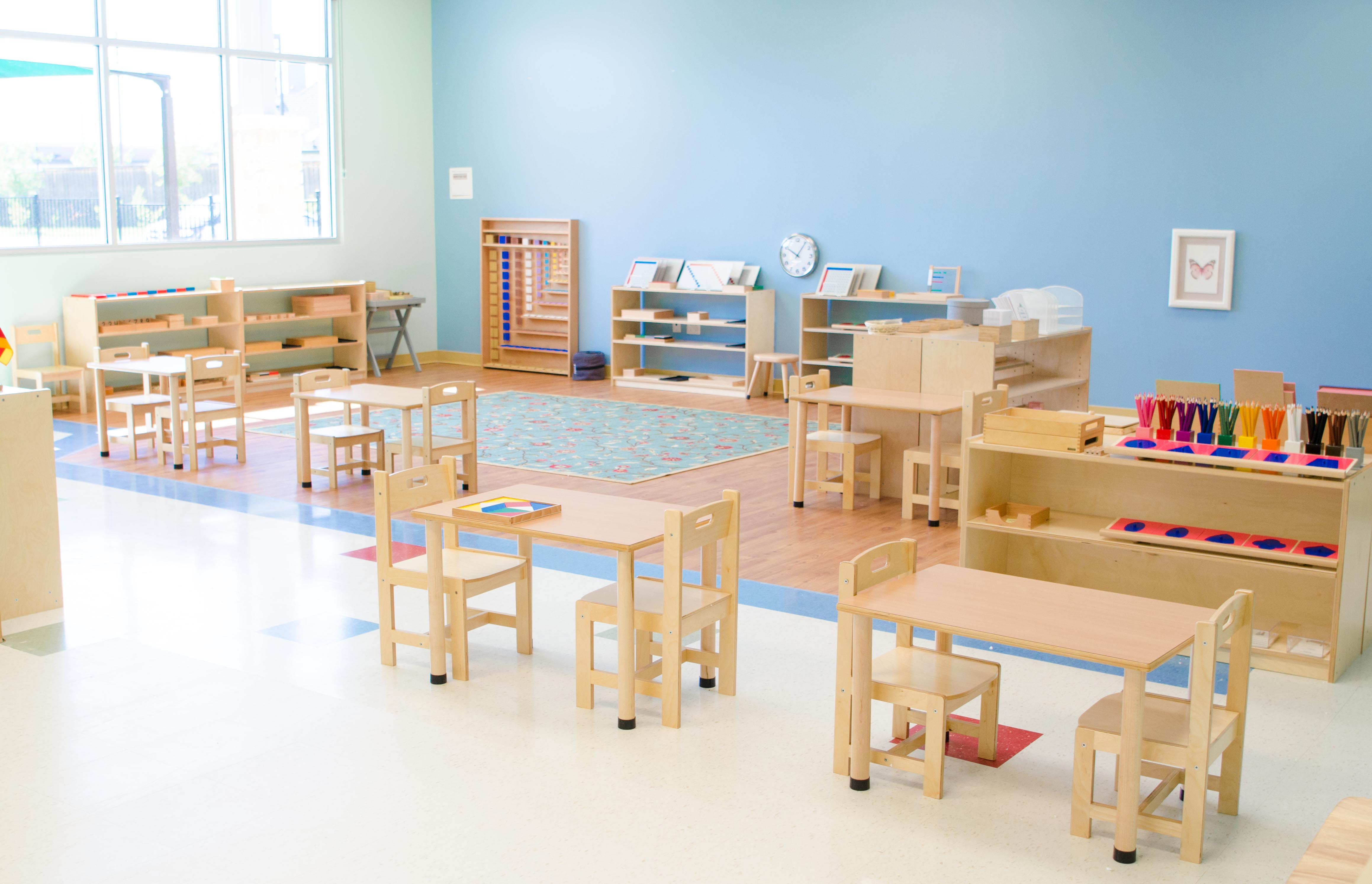What Makes Us Different—Why The Montessori Method Is Unique
The Montessori Method of education, developed by
Dr. Maria Montessori, is a knowledge-rich, child-centered educational
approach. Children learn in a thoughtfully prepared learning environment
with a comprehensive curriculum presented in the form of multi-sensory,
hands-on materials. It is an approach that values the development of
the whole child—physical, social, emotional, cognitive. Here are just a
few of the ways in which the Montessori Method is unique:
- The learning environment: Just
step inside a Montessori classroom to grasp the essence of Montessori
education. Beautiful, inviting, and thoughtfully arranged,
scientifically-designed learning materials are purposefully arranged and
ready for use in an aesthetically appealing environment. Classrooms
follow an open floor plan to create a learning environment that
encourages discovery and aids in developing the faculty of choice. There
are areas for group activity and areas for independent learning—no
stifling rows of school desks.

- The learning process:
A Montessori education allows children to experience the state of
“flow” and develop the skill of concentration through uninterrupted
blocks of work time, multi-age classrooms and child-directed work. This
learning method allows an immense amount of room for independence and
self-growth, with an emphasis on developing focus, self-motivation,
personal responsibility and engagement.
- The educators:
The concept that mastery is best achieved through exploration,
imitation, repetition, and trial and error is at the core of the
Montessori Method. Montessori “guides” work diligently to ensure that
their classrooms are prepared to incite learning, fostering a rich
learning environment and a collaborative community. Montessori teachers
don’t stand at the front of the room and issue instructions. They
circulate amongst the students, gently inspiring, guiding, and coaching.
These components are all required to achieve an authentic Montessori experience. But how do you know a Montessori school is really good? Here’s what to look for:
- Real materials:
Pay close attention to the quality of the materials used in for the
furniture and learning materials. Are the tables and shelves solid wood?
Are there real plants and animals in the room for the children to care
for? Are dishes real ceramic? Are materials displayed on beautiful
trays? These elements teach children to respect materials, and engage
their interest through beauty. There is a focus on developing practical
life skills, and all materials—from glass cookware to flowers—should be
real. Children know whether they are engaged in a real, purposeful life
activity, or whether they are just playing at adult activity. It makes
all the difference to their budding self-esteem to know they can do real things for themselves.
- Uninterrupted work period: While
this is one of the hallmarks of the Montessori method, too many
Montessori schools break up the morning work period with scheduled
activities. Ensure that your child’s program isn’t too scheduled. A 3 to
6 classroom should have a full three-hour work period in the morning. A
toddler classroom should have a two-hour work period. Young children
struggle with transitions. Longer periods of uninterrupted work allow
for the child to explore in an unhurried manner, sink deeply into an
activity, and develop their capacity to concentrate, which will allow
them to take on more and more challenging work.

- Multi-age classrooms: An
authentic Montessori school combines a full three-year age grouping of 3
to 6 year olds. Splitting out the 5 and 6 year olds into a separate
kindergarten classroom is an enormous missed opportunity, and a
misunderstanding of why Montessori works so well. It is during the 3rd,
“kindergarten year” that all of the early practical life and sensorial
work culminates in an explosion of language and math learning. Younger
children need to see, and be inspired by, the work that is taking place
at this level. Older children need the opportunity to experience
leadership, and take pride in how far they have come.

